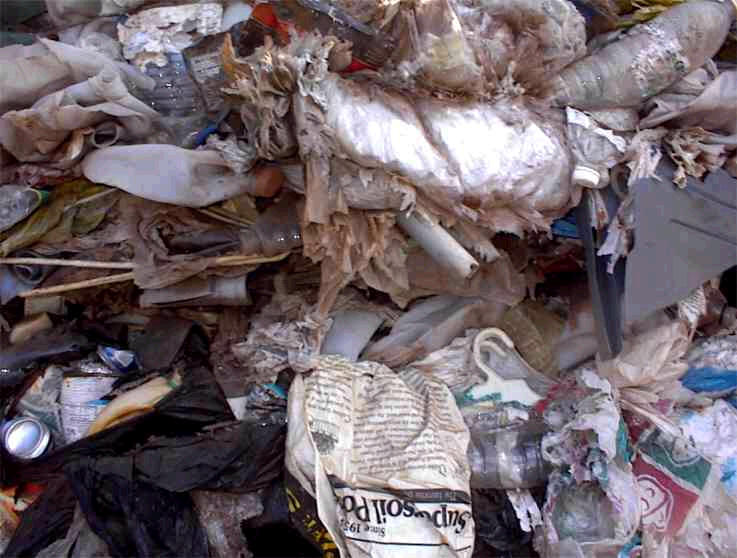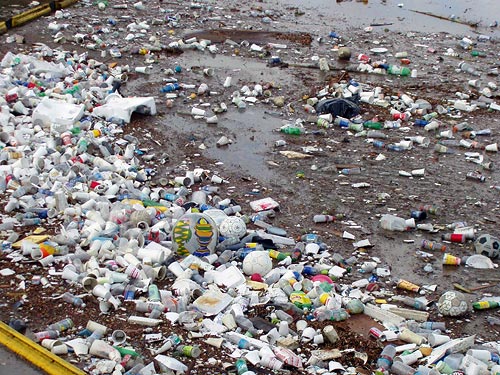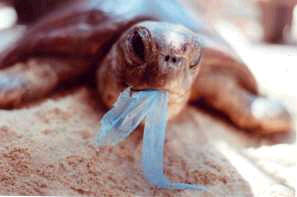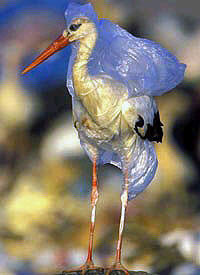
According to the article “S.F first city to ban plastic shopping
bags” from SFC.com; There is a ban of using plastic bag at large
supermarket and large chain pharmacies. 50 years ago, plastic is a
more environmentally friendly alternative from paper bags. However,
each year, there are 180 million plastic bags are distributed in San
Francisco. That becomes a serious pollution, dues to the hardness of
recycling the plastic bags.

First, a million plastic bags are used and thrown out, but plastic
lasts for hundreds of years in the environment without biodegrading.
About 600 plastic shopping bags are wasted in every second. We use a
million toxic plastic bags every minute, and the number keeps
rising. This is becoming a problem, because there are a large number
of plastic bags polluting the environment.

Second, plastic bags are made of petrochemicals, a nonrenewable
resource, which damages our living environment by liberating noxious
gas and other substances that can seriously affect our health.
According to the Day After International Illustrated newsmagazine,
it show that
the environmentalists claim them as hazardous, because may take as
many as 1000 years to degrade in a landfill, and 450 years in water.
Plastic bags don’t biodegrade; rather they photo-degrade, which
means that they break down into smaller and smaller toxic bits,
contaminating soil and waterways, entering the food web when animals
accidentally ingest and so becoming part of our own food-stream. As
such, they not only harm the environment, but also pose danger to
the health of human beings and animals. Also, plastic bags contain
harmful toxic metals like chromium and copper, which cause diseases
like allergies, cancer, malfunctioning of kidneys, limbs, etc., if
thrown in water, they affect the life of marine and animals.

Besides, Production of plastic requires petroleum and natural gas,
both non-renewable resources. This raw material creates more
greenhouse gases, and increases our dependency on foreign oil. All
plastic products that enter our marine environment eventually break
down into small fragments.
According to the evidence showed in the web site of The Pacific
Protection Initiative by “Heal the Bay”, their
studies indicate that many different plastic additives such as PCBs,
DDT and nonylphenols can seep into marine animals that inadvertently
ingest marine animals. About
100,000 whales, seals, turtles and other marine animals; are killed
by plastic bags each year worldwide, according to the report of
Planet Ark, an international environmental group of July 2004.
Moreover, it is estimated that 95% of the urban cows in India are
walking around with plastic bags blocking their digestive systems -
ironic in a country that reveres the cow as a sacred animal.

Most plastic bags are thrown into the trash, and the toxic trash is
mostly shipped to third world countries. This is the problem for all
of us, all over the world. The problem is solvable by reducing using
plastic bag. For example, shopping bags can be reused as trash bags,
storage bags, or any other type of bag. Other solutions are enacting
plastic bag taxes, a plastic bag ban, and the use of eco-friendly
bags.
If we do not pay attention on this problem serious, a
thousand years or so from now, when the archaeologists of the future
will be digging the soil to discover new things, they may not find
skeletons, skulls and jaws! What they will find is “plastic bags”.

Works Cited:
1.“The plastic Protection Initiative”; from “Heal the Bay”
<
http://www.healthebay.org/currentissues/ppi/theneed_bags.asp
>
2. S.F First City to Ban Plastic Shopping Bags; Supermarkets and
chain pharmacies will have to use recyclable or compostable sacks”;
by Charlie Goodyear, Chronicle Staff Writer; March28,2007;
SFGGATE.com.
<http://www.sfgate.com/cgi-bin/article.cgi?f=/c/a/2007/03/28/MNGDROT5QN1.DTL&hw=plastic+bags&sn=002&sc=478
>
3.“Plastic Bags: A Hazardous Consumer Item”; by Anis Ahmad; The Day
After- An International Illustarted NewMagazine of India.
<http://www.dayafterindia.com/aug206/plastic.html
>
|